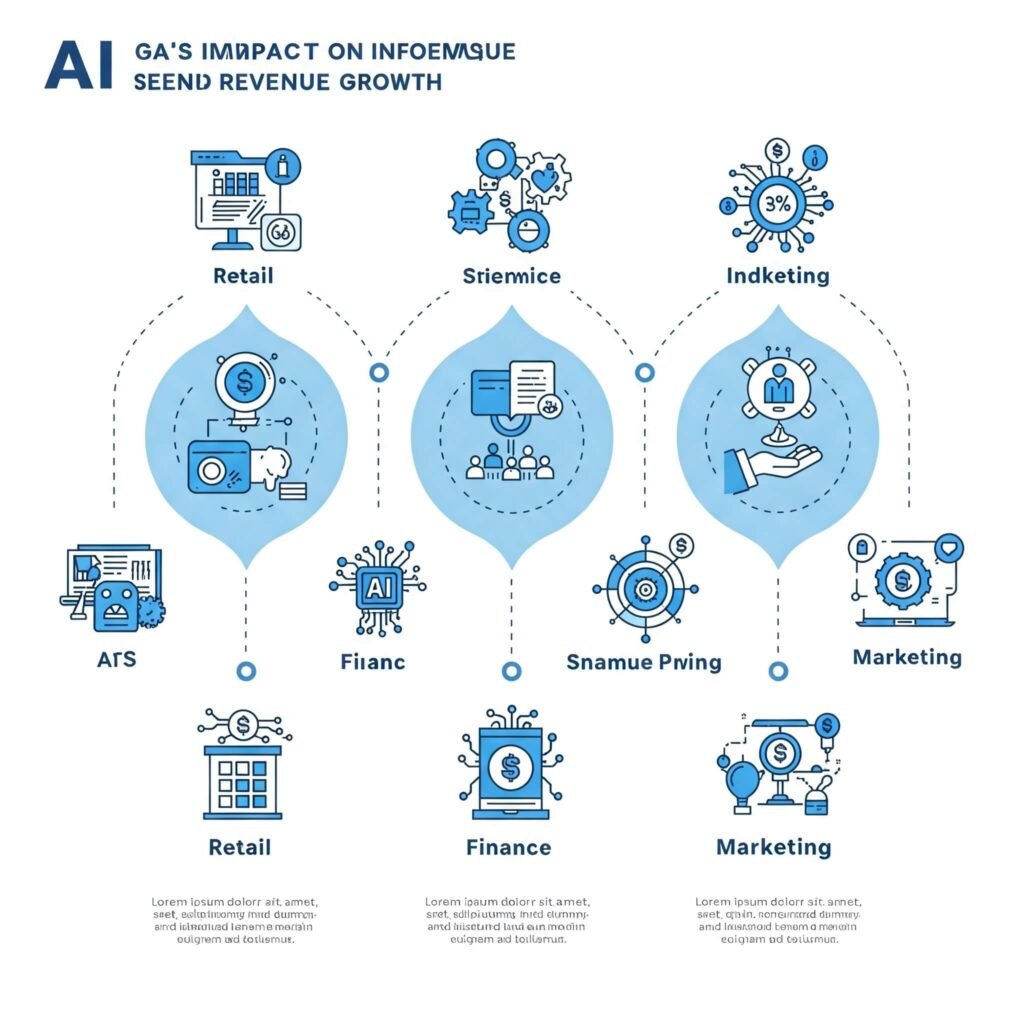How businesses are using machine learning is transforming industries, driving significant revenue growth. From crafting personalized marketing campaigns to preventing fraud, machine learning (ML) helps companies make smarter, data-driven decisions. In this blog, we’ll explore five powerful ways AI is boosting profits, backed by real-world examples and actionable insights. Whether you’re running a small startup or a global enterprise, this guide will show you how to leverage ML for business success.
Why Machine Learning Drives Business Success
Machine learning is a game-changer for companies looking to stay competitive. By analyzing vast datasets, ML uncovers patterns that lead to smarter strategies and higher profits. According to McKinsey, 2022, businesses adopting AI see revenue increases of up to 20%. Let’s dive into five ways ML is fueling financial growth.

1. Personalized Marketing: Driving Sales with AI
Machine learning powers personalized marketing, creating tailored customer experiences that boost conversions and loyalty.
Boosting Engagement with Recommendations
- Product Suggestions: Amazon’s algorithms drive 35% of its revenue by recommending products based on user behavior (McKinsey, 2022).
- Dynamic Pricing: Retailers like Walmart adjust prices in real time, increasing margins by 10% (HBR, 2023).
Example: Netflix uses AI to suggest shows, keeping viewers hooked and reducing churn. Learn more at AWS Customer Stories.
outbound link: How AI-Powered Personalization Boosts Sales
2. Customer Segmentation: Targeting the Right Audience
How businesses are using machine learning for customer segmentation enables precise marketing. AI clusters customers based on behavior and preferences for targeted campaigns.
Improving ROI with Data-Driven Insights
- Behavioral Analysis: Identifies high-value customers, maximizing marketing spend.
- Churn Prediction: Salesforce’s tools predict customer retention risks, improving retention by 15% (Salesforce, 2024).
Example: Starbucks sends personalized offers to segmented customers, driving a 20% increase in spending.

3. Fraud Detection: Protecting Profits with AI
Machine learning in finance safeguards revenue by detecting fraudulent transactions in real time, saving billions annually.
Securing Transactions with Advanced Algorithms
- Anomaly Detection: PayPal’s models flag suspicious activity with 99% accuracy (PayPal, 2023).
- Risk Assessment: Banks evaluate loan applicants, reducing defaults by 25%.
Example: Mastercard’s AI monitors spending patterns to block fraudulent charges instantly.
4. Inventory Management: Optimizing Operations
How businesses are using machine learning for inventory management cuts costs and boosts efficiency. AI predicts demand to optimize stock levels.
Streamlining Supply Chains
- Demand Forecasting: Walmart’s models reduce overstock by 20% (HBR, 2023).
- Supply Chain Efficiency: Minimizes delays, saving logistics costs.
Example: Zara forecasts fashion trends with AI, ensuring popular items are in stock, driving sales.
5. Predictive Analytics: Forecasting Future Growth
Machine learning’s predictive analytics unlocks opportunities by forecasting trends and customer behavior.
Planning with Precision
- Sales Forecasting: IBM Watson predicts revenue with 90% accuracy (IBM Watson).
- Market Trends: Identifies emerging opportunities for a competitive edge.
Example: Coca-Cola uses AI to predict regional beverage demand, boosting profits by 15%. Explore analytics tools at Tableau’s Business Intelligence page.

Getting Started with Machine Learning for Your Business
Ready to tap into how businesses are using machine learning? Here’s how to begin:
- Learn Python: Start with a free course on Coursera.
- Use ML Tools: Experiment with Google Colab for free projects.
- Join Communities: Connect with experts on Kaggle’s forums.
- Start Small: Build a simple model, like a churn predictor, using scikit-learn.
Pro Tip: Partner with cloud platforms like AWS or Azure for scalable ML solutions.
Challenges of Implementing Machine Learning
While machine learning drives revenue, challenges persist:
- Data Quality: Poor data leads to inaccurate models.
- Ethical Concerns: Biased models can harm reputation (Forbes, 2024).
- High Costs: Training models requires investment.
Solution: Use clean data, ethical AI practices, and cloud-based tools. Gartner predicts 75% of organizations will adopt AI by 2027 (Gartner, 2024).
Conclusion: Skyrocket Your Revenue with Machine Learning
Machine learning is transforming how businesses operate, from personalized marketing to predictive analytics. Companies like Amazon, Starbucks, and Coca-Cola are leveraging AI to boost profits and stay competitive. Start small, experiment with tools, and embrace data-driven strategies to unlock your business’s potential. The future of revenue growth is here, and machine learning is leading the way.































